Earl’s Court
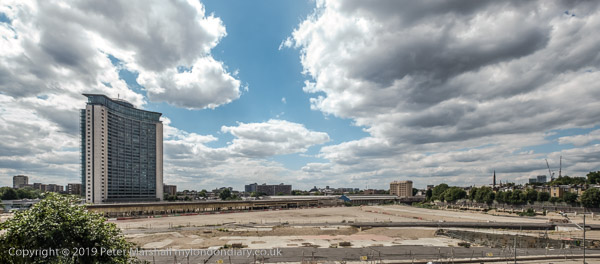
Boris Johnson’s time as Mayor was in many ways a disaster for London, but while the media obsess about his sexual peccadilloes and to a lesser extent his racist comments, little is said about his more important failures, which may have enriched some of his city friends but whose consequences will remain to impoverish Londoners for many years after he has left office. One of these, and probably the biggest, is the stalled £12 billion Earls Court redevelopment, which makes even the £53 million Garden Bridge Fiasco fade into insignificance.
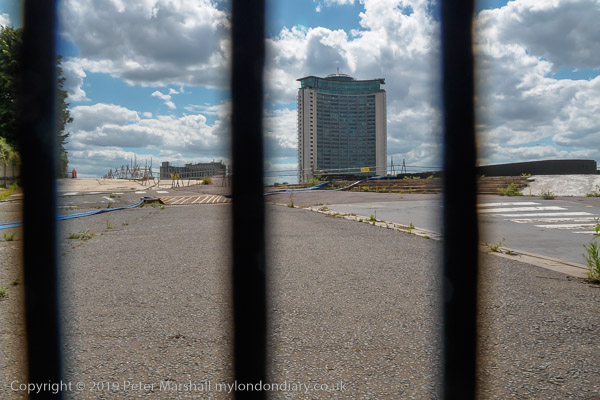
It’s wrong of course to call it a blunder. It was a deliberate scheme for the enrichment of a few, undoubtedly including friends and financial supporters of the Conservative Party at the expense of London and Londoners, aiming to provide a huge high-rise development of investment properties largely for sale to foreign investors, a huge empty triangle in what was once a thriving part of London, contributing greatly to the local area and more widely, housing several thousand people who would lose their homes and removing jobs from the area.
Along with Boris, and Transport for London, then a part of his fiefdom, the villains in this £12 billion scheme are developers CAPCO, (Capital & Counties Properties) whose development proposals bear no relation to the considerable history, needs of the area and its locality and the contribution it would pay to the local economy, simply wiping the whole area clean and imposing a solution based on maximising profit to the developers. As soon as they acquired the site in 2008 they applied to English Heritage for a Certificate of Immunity from Listing for the 1930s Earls Court Exhibition Centre, granted despite its iconic status – and the fact that some aspects of it were apparently already listed.
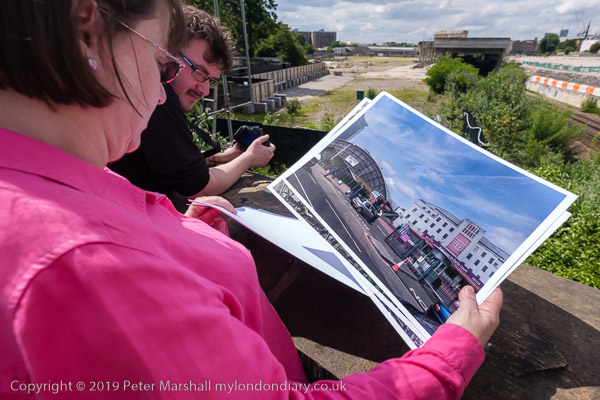
The site falls into two London Boroughs, Kensington and Chelsea and Hammersmith and Fulham, both when the project began under Conservative control. Hammersmith and Fulham council agreed to sell off the two council estates which cover a large part of the area to Capco in 2012. Since Labour took over in H & F in 2014 they have set up an inquiry into the decision to sell and have called for Capco to return the two housing estates. In February 2019 the Mayor of London, Sadiq Khan, stated that he wanted the two estates to be transferred back to the council by Capco unconditionally after they demanded unacceptable planning permission in return for their release.
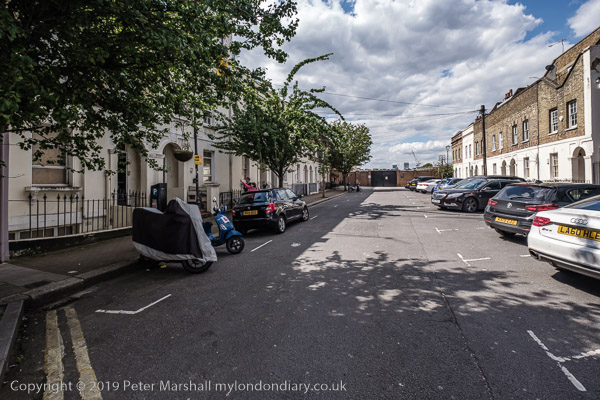
There are two large office blocks on the site, both visible in the top picture. The tower at left has already been sold and is now occupied by the Metropolitan Police. The smaller block, at right, belongs to TfL and is a part of their site which also includes extensive workshops; it seems that they have so far failed to find suitable alternative sites for these essential facilities.
Thanks to determined opposition from local people the scheme has so far failed to materialise, and the West Kensington and Gibbs Green estates are still there, along with the TfL workshops, but the demolition of the two exhibition centres has created the largest desert in London. The cleared area, left as dusty bare cleared rubble is a local eyesore and pollution source, with wind carrying dust into local homes and businesses, creating thick and possibly dangerous grime.
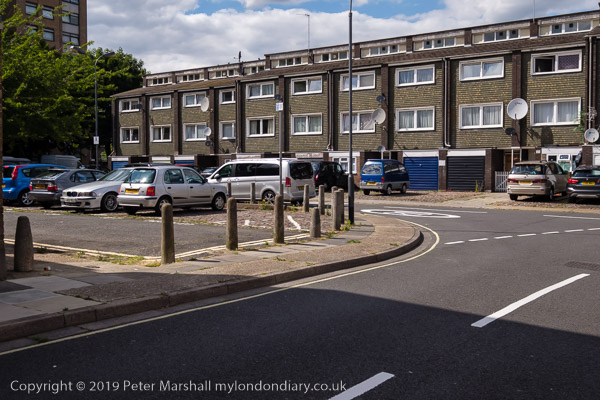
Opposition to the demolition of the exhibition centres is led by the Earl’s Court Area Action Group, one of whose members took me and other journalists on a tour of the area last week. They now demand the demolished area be developed with a replacement venue for the demolished iconic Earls Court Exhibition Centre as a large green space for exhibitions, sports and cultural events, along with “low rise, high density, exemplary green housing with a wide range of housing options including social housing, green space, community and social infrastructure, reflecting the demographic and unique characteristics of Earl’s Court.”
The residents of West Ken & Gibbs Green estates have been campaigning against the demolition of their homes since 2009, and as a part of their campaign for ‘The People’s Estates’ commissioned Architects for Social Housing (ASH) who in 2016 produced ‘the People’s Plan’ for improvements and new homes on the estates without demolition. They want the estates to be transferred to community ownership.
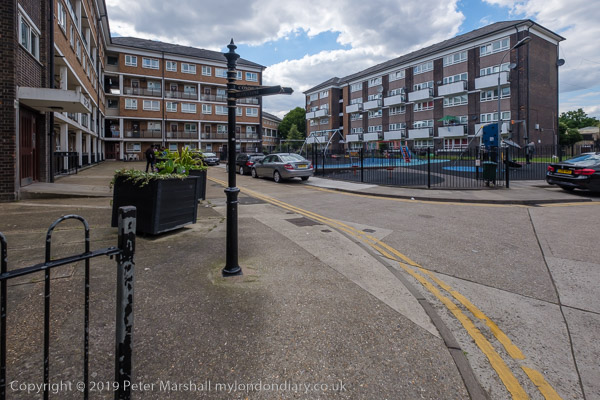
Earl’s Court Area Action Group
WKGGCH – West Ken & Gibbs Green Community Homes
ASH – Architects for Social Housing
There are no adverts on this site and it receives no sponsorship, and I like to keep it that way. But it does take a considerable amount of my time and thought, and if you enjoy reading it, please share on social media.
And small donations via Paypal – perhaps the cost of a beer – would be appreciated.
All photographs on this and my other sites, unless otherwise stated, are taken by and copyright of Peter Marshall, and are available for reproduction or can be bought as prints.
To order prints or reproduce images